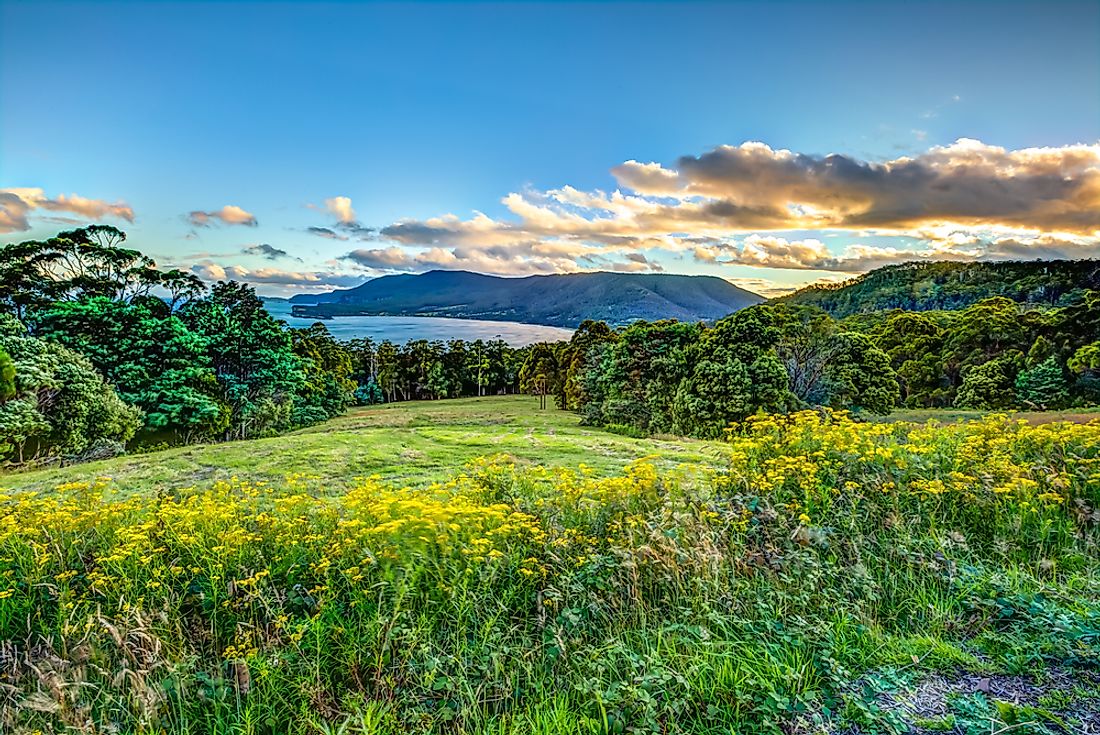National Parks In Tasmania

Tasmania is an island located to the south of mainland Australia. This island has a cool, temperate climate and experiences a climate consisting of four seasons. It is further divided into specific ecoregions: the central highland forests, temperate forests, temperate rainforests, and the central plateau.
The western region of Tasmania is the coolest and most humid area of the island. It is covered by temperate forests and rainforests, which thrive under the frequent rains that occur throughout the largely mountainous terrain. In the central region of Tasmania, the central plateau rises above the area with dry grasslands along its north and south sides. The plateau itself has eucalypt forests within the lower elevations and evergreen forests at higher elevations.
The Wild Flora and Fauna of Tasmania
Tasmania is well-known for its wide variety of unique biodiversity, much of which owes itself to the island’s geographic isolation. Surrounding the island are a number of coral reefs, atolls, and small islands. On the mainland, the temperate rainforests are filled with moss, lichens, liverworts, and myrtle beech trees. Other flora of Tasmania include deciduous beech, Antarctic beech, eucalyptus, acacia, casuarina, xeric shrubs, and various flowering plants.
The fauna of Tasmania is just as diverse and unique as the flora, with many endemic species that closely resemble fossils that are hundreds of millions of years old. One example of this is the Tasmanian cave spider, which is considered one of the most primitive spider species in the world. Other unique animals found in Tasmania include: Tasmanian devil (a marsupial mammal), spotted quoll (a marsupial mammal) strong-billed honeyeater (a bird species), and Tasmanian treefrog.
Threats to Tasmania’s Wildlife
The threats to the wildlife of Tasmania began with the arrival of European settlers. Habitat destruction, introduction of invasive species, and exploitation of native wildlife and natural resources resulted in the extinction of approximately 23 bird species, 27 mammal species, and 4 frog species. These issues continue to threaten the current wildlife population of Tasmania, today.
New threats, however, have been introduced in recent decades. Perhaps the most concerning of these is global climate change, which is contributing to a significant rise in sea levels and water temperatures. This change has a negative impact on coastal ecosystems. Further inland within the numerous Tasmanian forests, global climate change is affecting fire season patterns. This is threatening several tree species.
Establishment of National Parks in Tasmania
Tasmania established its first national park in 1908, called Ben Lomond, although at the time it was categorized as a scenic reserve. It was not until 1947 that it officially became a national park. An additional nine national parks were protected between 1916 and 1967. By 1971, the Tasmanian government decided that it needed to provide adequate management of the local environment. In response to a public outcry over a plan to flood Lake Pedder, the National Parks and Wildlife Service was established. With its beginning staff size of 59, the newly implemented department worked to set aside its first national parks. The first national parks established include: Maria Island (1972), Mount William (1973), and Narawntapu (1976).
Significance of National Parks in Tasmania
Today, Tasmania has a total of 19 national parks and 816 nature reserves, covering around 40% of the island’s area. These parks are significant for a number of reasons and many of them have been included in the Tasmanian Wilderness World Heritage list. The special conservation status of these areas works to protect the diverse flora and fauna of each unique ecosystem. Additionally, residents of and tourists to Tasmania are able to enjoy the unspoiled environment by hiking, camping, observing wildlife, and taking pictures.
National Parks In Tasmania, Australia
| Rank | Name | Date of establishment |
|---|---|---|
| 1 | Franklin-Gordon Wild Rivers National Park | 1908 |
| 2 | Freycinet National Park | 1916 |
| 3 | Mount Field National Park | 1916 |
| 4 | Cradle Mountain-Lake St Clair National Park | 1922 |
| 5 | Hartz Mountains National Park | 1939 |
| 6 | Ben Lomond National Park | 1947 |
| 7 | Kent Group | 1947 |
| 8 | Southwest National Park | 1955 |
| 9 | Strzelecki National Park | 1967 |
| 10 | Rocky Cape National Park | 1967 |
| 11 | Maria Island National Park | 1972 |
| 12 | Mount William National Park | 1973 |
| 13 | Narawntapu National Park | 1976 |
| 14 | Walls of Jerusalem National Park | 1978 |
| 15 | Douglas-Apsley National Park | 1989 |
| 16 | Mole Creek Karst National Park | 1996 |
| 17 | South Bruny National Park | 1997 |
| 18 | Savage River National Park | 1999 |
| 19 | Tasman National Park | 1999 |











